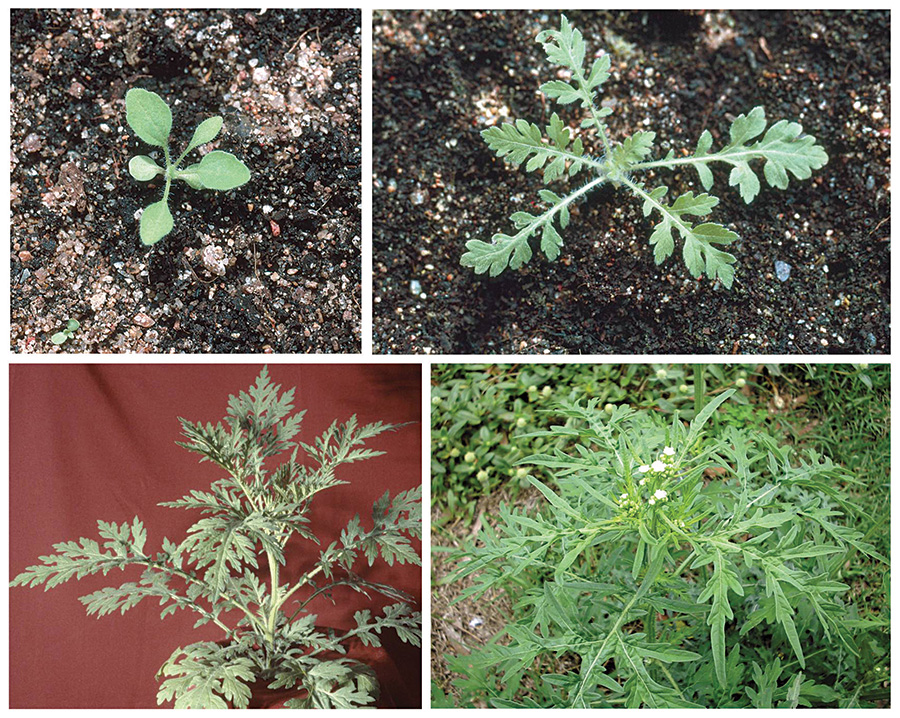Growers moving fodder and harvest machinery are encouraged to take extra care to avoid spreading invasive weeds such as annual ryegrass and parthenium.
University of Queensland Professor Bhagirath Chauhan says the movement of annual ryegrass-infested fodder and machinery has caused the weed to spread north.
“Annual ryegrass has rapidly established itself across southern Queensland, making it a threat to wheat and chickpea production,” Professor Chauhan says.
“Also, we have found that ryegrass is expanding its growth habit to summer.”

Typical growth stages of parthenium, from seedling to mature plant. Photo: NSW DPIRD, J.J. Dellow, J. Gasparotto, Sheldon Navie, NSW Government
Invasive parthenium
The greatest weed threat to New South Wales is considered to be parthenium.
Since April 2020, 49 parthenium infestations have been detected and are being eradicated following movements of contaminated hay, grain, vehicles and machinery from Queensland.
Professor Chauhan says some populations can be controlled easily, but others are hardy, drought-tolerant and difficult to control with herbicides. He reminds growers to:
- be aware of problem weeds and know where seeds might cling to vehicles or machinery;
- clean machinery thoroughly before moving from one paddock to another;
- consider installing a clean-down area for inspection and cleaning of all vehicles entering and leaving the farm;
- ensure all machinery has been cleaned or treated with a seed sterilant by checking
the Carrier Biosecurity Certificate; - put at-risk fodder in a stock containment enclosure for close monitoring of weed germination;
- check roadsides and fences for weeds requiring eradication; and
- physically dig out invasive weeds for destruction before they set seed.
More information: Bhagirath Chauhan, b.chauhan@uq.edu.au

























































